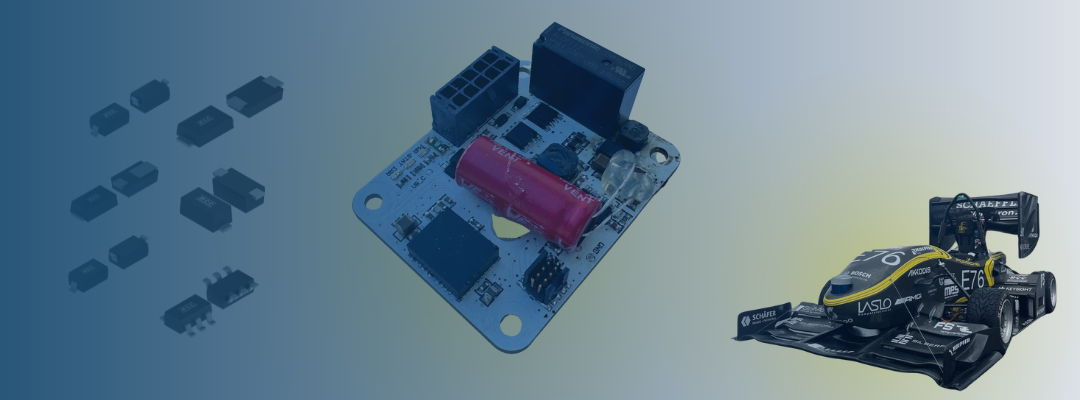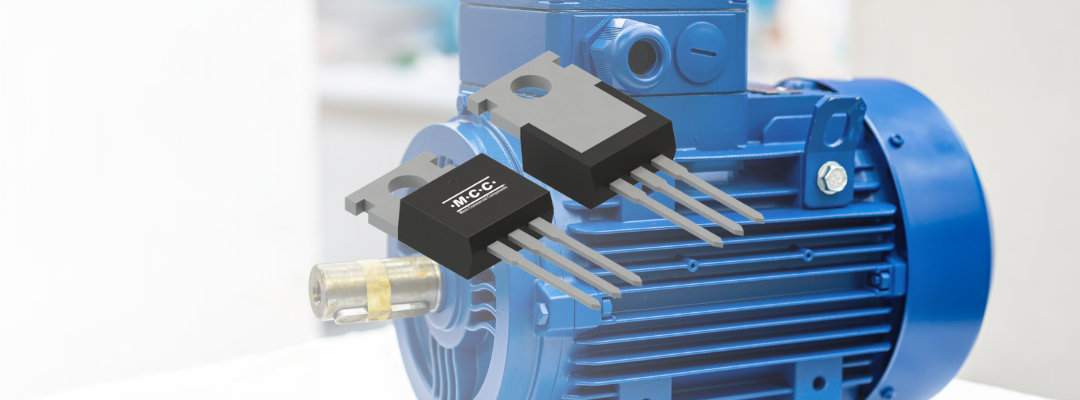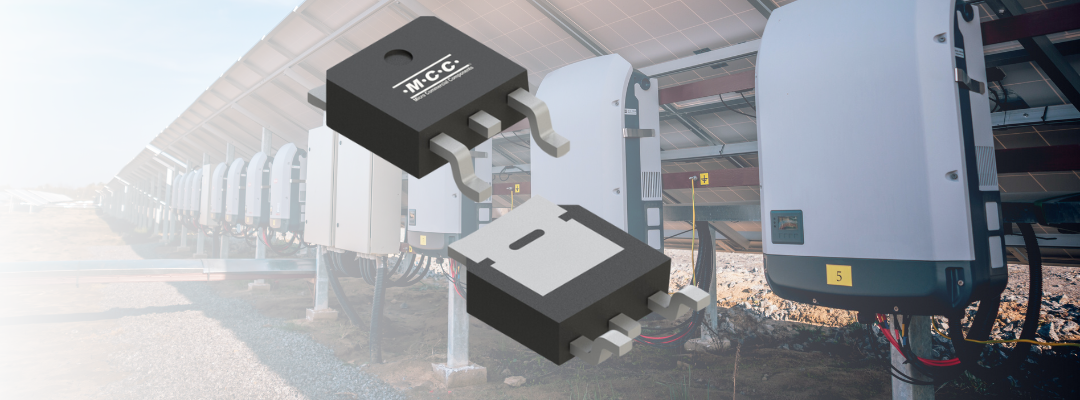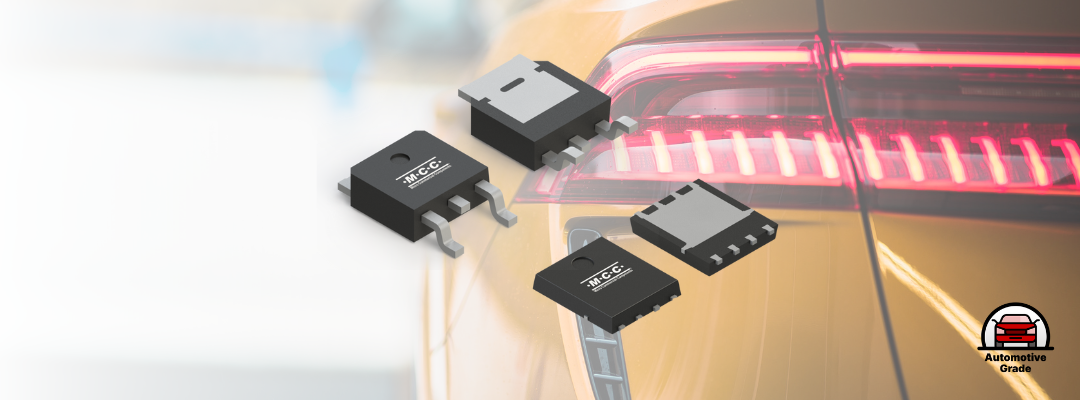MCC Solutions Empower Advanced EV Safety with High Reliability
Innovative race cars use both autonomous and driver modes. But fully autonomous mode still requires human braking capability for maximum safety. Systems like the Remote Emergency Switch Bypass Relay Switch are essential, enabling the vehicle to be stopped quickly and safely, whether it’s driving itself or under manual control.
In this post, we’ll explore the key functions and design considerations of the Remote Emergency Switch Bypass Relay Switch and take a closer look at the reference board KA-RaceIng developed for this mission-critical safety system.
What is the Remote Emergency Switch Bypass Relay Switch System?
The Remote Emergency Switch (RES) Bypass Relay Switch is a specialized printed circuit board (PCB) designed for advanced automotive applications. It is especially important in autonomous and competitive vehicles like those developed by KA-RaceIng.
Here’s a breakdown of this essential safety system with a complex name:
- Remote Emergency Switch: Allows for activation outside of the vehicle during emergencies.
- Bypass Relay: A relay mechanism is used to bypass the emergency switch during manual driving.
- Switch: Used in turning safety-critical circuits on and off.
This system allows the vehicle to be stopped remotely — a vital safety feature for autonomous vehicles — that ensures:
- Safety: The ability to immediately stop the vehicle remotely in dangerous situations, protecting drivers, spectators, equipment, and property.
- Rules Compliance: Full compliance to strict competition regulations, like those found in Formula Student, which require manual and remote emergency shutdown capabilities.
- Flexibility: Seamless switching between autonomous and manual modes without compromising safety or complianc
How Does the Remote Emergency Switch Bypass Relay Switch Work?
This one system is crucial in two driving modes:
Normal Function (Autonomous Mode)
When running autonomously, the RES system is active. If a dangerous situation arises, the team can remotely trigger the RES to kill power to critical systems such as steering or brakes, safely stopping the car.
The PCB uses a large relay and a low RDS(on) power MOSFET to handle high-current switching. Zener and Schottky diodes protect against voltage spikes and reverse currents.
Manual Bypass (Manual Driving Mode)
During manual driving or testing, bypassing the emergency switch is necessary to comply with competition rules or avoid unwanted shutdowns.
The PCB includes a relay circuit that bridges the safety signal path, allowing manual control while maintaining safety compliance.
RES Bypass Relay Switch Board Functions
KA-RaceIng’s reference board enables the team to remain safe and competitive, reliably performing these essential functions:
- Safety Signal Bridging: Bridges emergency safety signals during manual operation to comply with Formula Student rules.
- Power Supply Management: Controls power supply lines for vital systems like steering actuators and emergency brakes during autonomous operation.
MCC Components Used & Their Roles
MCC provided all components for this system, ensuring reliability and full compliance with competition standards

Zener Diodes
- Part Number: MMSZ5225BHE3
- Specifications: Standard 3V
- Application: Provides microcontroller (IC) input protection
- Part Number: BZT52C3V0HE3
- Specification: Standard 3V
- Application: Provides microcontroller (IC) input protection
- Part Number: MMSZ5248BHE3
- Specification: Standard 18V
- Application: Protects board from overvoltages
Small Signal Schottky Diodes
- Part Number: SMD18PLHE3
- Specification: 80V, 1A
- Application: Freewheeling diode for relay
Schottky Barrier Rectifiers
- Part Number: MBRB30100CTQ
- Specifications: 100V, 30A
- Application: Diode with exceptional high current capability
Power MOSFETs
- Part Number: MCTL300N10YHE3
- Specification: 100V with low RDS(on)
- Application: Efficiently handles high currents with low losses
Common Design Challenges in RES Bypass Relay Switches
Engineers must overcome a long list of challenges when designing reliable remote emergency switch bypass relay switches:
- Fail-Safe Operation: The system must default to a safe state if any component fails, ensuring emergency stop capability always remains intact.
- Signal Integrity: Design to prevent interference and false triggers in noisy wiring or harsh environments.
- Fast Response: Instant shutdown is a must with minimal delay from trigger to action.
- Robust Component Selection: Parts should be rated for high currents, voltage spikes, and motorsport stresses without failure.
- Thermal Management: All components need to efficiently dissipate heat generated by relays and MOSFETs under normal and emergency conditions.
- Vibration Resistance: Designs must withstand constant shock and vibration without connection failures or solder joint degradation.
- Rules Compliance: Full compliance with applicable competition safety regulations is critical and requires clear documentation.
- Safe Bypass Logic: Reliable programming is crucial to allow bypass only during manual driving, never during autonomous operation.
- Clear Status Feedback: Intuitive and highly visible indicators or telemetry are needed to show armed, bypassed, or triggered status for diagnostics.
Addressing these challenges is essential to deliver a safe, reliable, and competition-ready emergency switch system.
Engineering Safety & Success for KA-RaceIng
KA-RaceIng demonstrates how robust safety design is crucial in motorsport. Leveraging MCC’s high-reliability components in the Remote Emergency Switch Bypass Relay Switch system, the team ensures safe and flexible operation in both autonomous and manual modes while fully complying with competition rules.
With MCC’s trusted components powering their designs, KA-RaceIng and other engineering teams can focus on performance and innovation, confident their emergency systems meet the highest safety standards.
Explore the additional reference boards KA-RaceIng developed with advanced MCC solutions.
.png?width=500&height=300&name=KA-racing%20-%20MCC%20sponsor%20-%20electronica%202025%20-%20mcc%20-%20micro%20commercial%20components%20%20(600%20x%20300%20px).png) |
.png?width=500&height=300&name=KA%20Racing%20Team%20-%20Sponsor%20MCC%20semi%20-%20Micro%20Commercial%20Components%20500x300%20(7).png) |
 |
 |
.png?width=50&height=50&name=mcc%20150x150%20(1).png)



